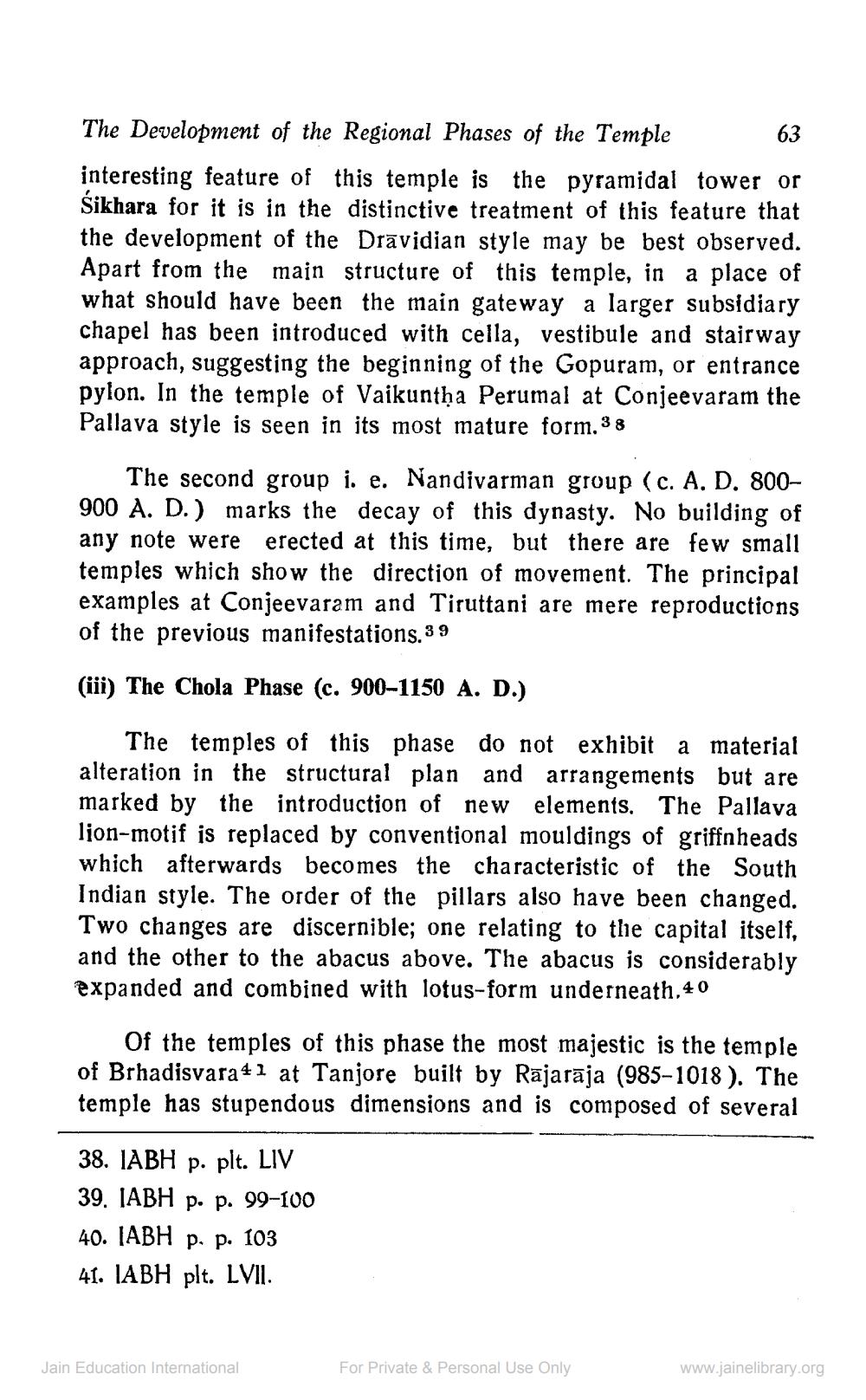________________
The Development of the Regional Phases of the Temple 63 interesting feature of this temple is the pyramidal tower or Sikhara for it is in the distinctive treatment of this feature that the development of the Drāvidian style may be best observed. Apart from the main structure of this temple, in a place of what should have been the main gateway a larger subsidiary chapel has been introduced with cella, vestibule and stairway approach, suggesting the beginning of the Gopuram, or entrance pylon. In the temple of Vaikuntha Perumal at Conjeevaram the Pallava style is seen in its most mature form. 38
The second group i. e. Nandivarman group (c. A. D. 800900 A. D.) marks the decay of this dynasty. No building of any note were erected at this time, but there are few small temples which show the direction of movement. The principal examples at Conjeevaram and Tiruttani are mere reproductions of the previous manifestations. 39
(iii) The Chola Phase (c. 900-1150 A. D.)
The temples of this phase do not exhibit a material alteration in the structural plan and arrangements but are marked by the introduction of new elements. The Pallava lion-motif is replaced by conventional mouldings of griffnheads which afterwards becomes the characteristic of the South Indian style. The order of the pillars also have been changed. Two changes are discernible; one relating to the capital itself, and the other to the abacus above. The abacus is considerably expanded and combined with lotus-form underneath.40
Of the temples of this phase the most majestic is the temple of Brhadisvara1 at Tanjore built by Rājarāja (985-1018 ). The temple has stupendous dimensions and is composed of several
38. IABH p. plt. LIV 39. JABH p. p. 99-100 40. IABH p. p. 103 41. TABH plt. LVII.
Jain Education International
For Private & Personal Use Only
www.jainelibrary.org




